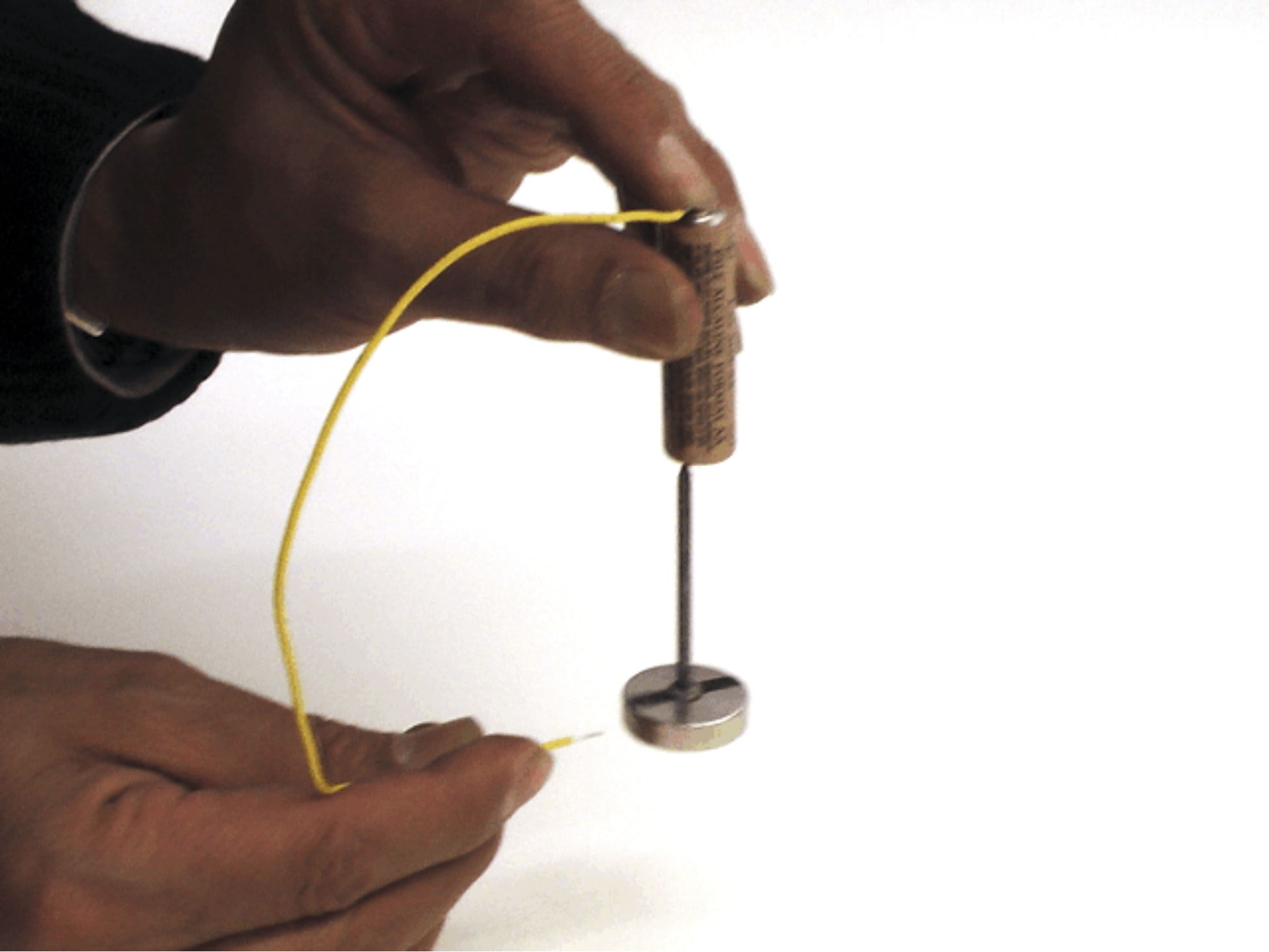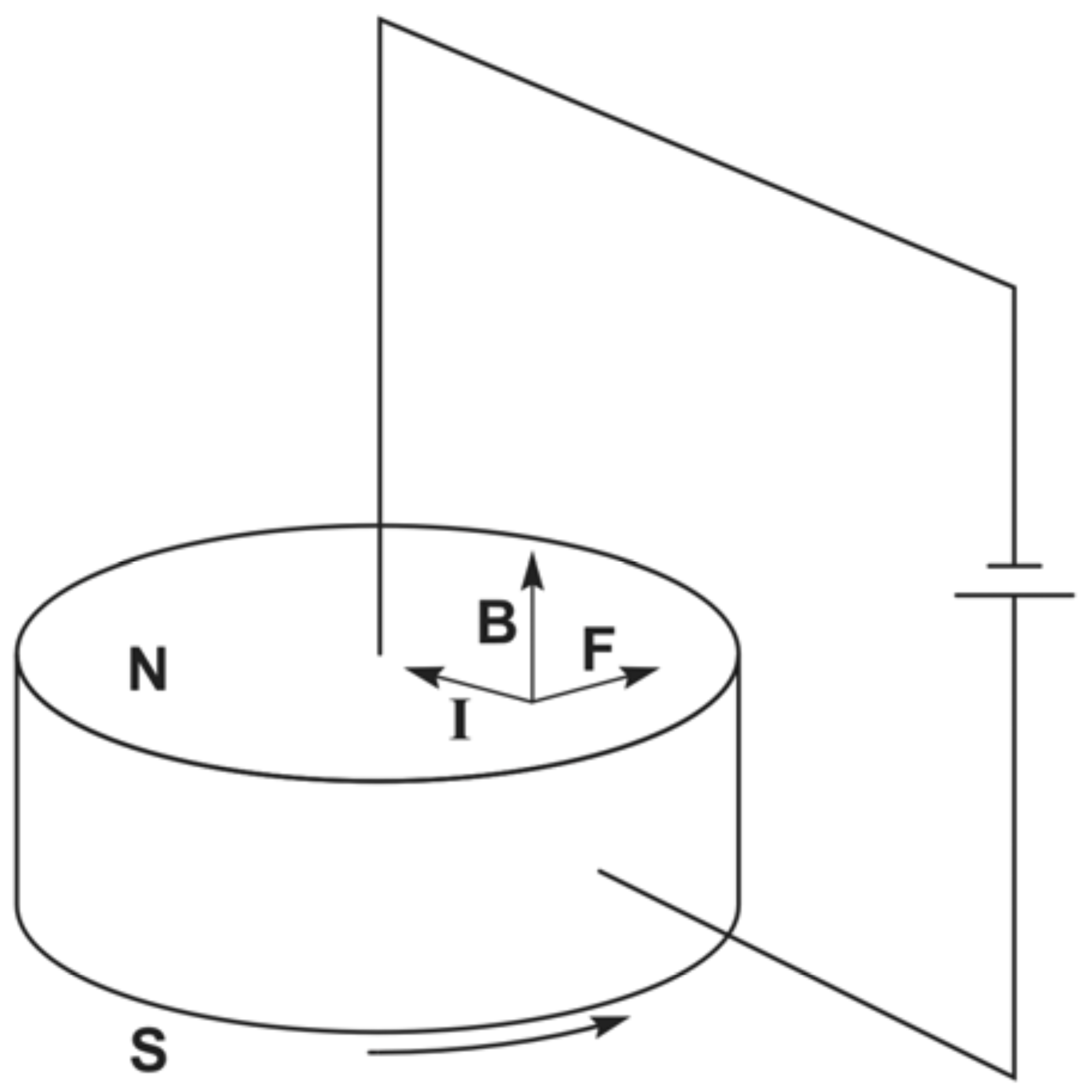The World’s Simplest Motor
March 01, 2006 Filed in:
Demo CornerJohn Pitre, University of Toronto
In the December 2004 issue of
The Physics Teacher, Christopher Chiaverina described a motor consisting of four components: a battery, a cylindrical rare earth magnet, a small piece of copper wire, and a steel nail. Since I know that many of our members do not have ready access to this journal, I have essentially reproduced his article here.

The above picture shows the motor that we built at the University of Toronto. The left hand holds the battery and the forefinger holds one end of the wire against the positive end of the battery. The magnet sticks to the head of the nail and the tip of the magnetized nail is attracted to the ferromagnetic bottom of the battery. The right hand touches the other end of the wire to the side of the magnet. That’s it! You’ll be amazed at how quickly the cylindrical magnet spins.
It’s easy to understand how the motor (technically called a homopolar motor) works by referring to the schematic diagram below. Current flows through the magnet and along its surface and the charge carriers experience a Lorentz force since they are moving in a magnetic field. The direction of the force
F which determines the sense of rotation is given by the right hand rule or by the direction of the cross product
I ×
B. Of course, one can reverse the sense of rotation by simply flipping over either the battery or the magnet.

Rare earth magnets are readily available from any scientific supplier like Arbor Scientific and, for many of you, they are available locally at Lee Valley Tools. Get one soon and impress your students!
Column Editor: Ernie McFarland, Physics Department, University of Guelph, Guelph, Ontario, N1G 2W1 Tags: Electricity, Magnetism



